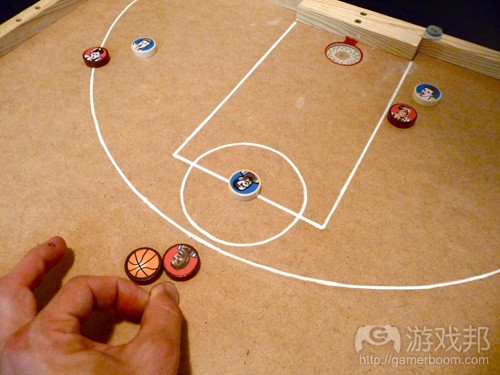开发者应创建游戏原型的理由及方法
构想出一个游戏创意已经足够困难了,但你是否考虑过如何判断想法的可行性?当然,你大可以信任自己的设计水平,马上执行构想。不过我本人不推荐这么做。无论你在游戏设计方面的技艺有多纯熟,构想也难免与自己的想像有出路;如果在开发过程已经进行了一半时,你才发现有问题,那真是一件令人羞耻的事。
我坚定地认为,你应该在执行游戏创意前建立一个原型。你的游戏概念好不好、需不需要调整或要不要彻底放弃转投其他方案,你从原型中就可以很快地找到答案。
建立原型具有以下几大优势:
1、发现游戏的可行性。如我所言,如果游戏确实像你构想的那么有趣,从原型中是可以看出来的。没人喜欢的游戏是不值得浪费时间的。
2、尝试不同的构想。如果你的脑海中浮动着不同的游戏构想,那么就给各个构想都建立一个原型,然后从中作出最可信的决定。特别是,当你处于几个人合作的团队,成员都各有好想法时,你可以通过原型做出选择。
3、平衡游戏规则。选定游戏“潜力股”后,你还必须平衡游戏的规则。借助原型,你可以尝试不同的规则,从中找到合适的平衡。通常你也可以等到设计开发进入成熟期再平衡规则。但是,因为原型之后是要不断修整丢弃的,所以你不必担心出现漏洞。
4、促进沟通交流。所谓口说无凭,你不能指望单凭口头上的谈论就让别人信服你的新构想。但原型可以帮助其他人加强对游戏构想的理解。再者,如果你正好是团队中的一员,原型对其他成员来说更有说服力。如果你想调整游戏的概念,在你说服其他成员以前,你可以通过原型展示调整后的效果。
5、获取反馈。给大家试玩你的游戏原型,然后询问他们对游戏的想法。单看设计文档是很难得到反馈的,但如果你能拿出原型,那就容易多了。
原型的类别
你可以尝试不同的方法来建立原型。如何选择取决于你所设计的游戏类型和开发阶段。
1、纸笔原型。因为我都是从纸上起草我的设计,所以先制作草稿原型符合我的逻辑。顺便一提,除了纸笔,你也可能需要橡皮擦。虽然这种原型非常粗糙,但你可以灵活地反复修改。这一点在早期设计中非常有价值。
2、桌面游戏。从现成的桌面游戏中挑选有用的部分组成可玩的原型,这是我最喜欢的原型构建方法。无论是什么类型的游戏,这种方法都管用,不过在时间处理上你得有点创意。桌面游戏原型的灵活性允许你进行频繁的规则调整。这类原型的可玩性非常高,因为你可以往其中添加非常多的创意。
3、绘图程序。使用绘图软件,如Photoshop或Paint Shop Pro 有助于游戏概念设计。这有点类似于构建桌面游戏原型。虽然这种设计方法不太适合向他人展示游戏,但你也省去了构建一大堆原型的麻烦。
4、程序原型。最复杂的原型当然是在电脑上设计的。因为你可以随心所欲地建立原型,其效果最接近游戏成品。通过程序原型,你可以测试游戏的方方面面,如用户界面、控制和时间等等,这些是上述几类原型所欠缺的。另外,程序原型容易与他人分享,从而有助于交流和反馈。在所有已提及的原型中,程序原型耗时最久、调整最难,所以我建议你完成游戏设计和规则基础以后再开始程序化原型。
不必拘泥于一类原型,你可以在设计开发进程中建立不同的原型。同时让几个人建立各自的原型,然后查看不同想法的结果,这对游戏开发也是有好处的。尽可能多尝试——毕竟,这就是建立原型的目的。(本文为游戏邦/gamerboom.com编译,如需转载请联系:游戏邦)
Building a prototype
Coming up with an original idea for a game can be hard enough, but how do you know if your idea will actually work? Of course, you could just trust your own design skills and start implementing the game. That’s not an approach I’d recommend, though. No matter how good and experienced you are at game design, an idea can always turn out different than you think and it would be a shame if you found that out when you’re already halfway through development.
I firmly believe that you should build a prototype for any game idea you consider implementing. A prototype will tell you quickly if your game concept is fine the way it is, if it needs tweaking or whether you should come up with a different game altogether.
Advantages
Building a prototype has several advantages.
Find out if the game works. As I said, a prototype tells you if your game will be as fun as you think. It’s no use wasting time on a game that no-one will enjoy.
Try out different ideas. If you have different game ideas floating around, building prototypes for each of them allows you to make a more informed decision when you pick one of them. This is especially useful when you are working in a team where several people have a good idea and you don’t know which one to go with yet.
Balance game rules. Once you settle on a game that has potential, you need to balance the game rules. A prototype allows you to try out different rulesets so that you can find the right balance. You can usually also do this when you’re in full-blown development, but since prototypes are made to be discarded after a while, you don’t have to worry about introducing bugs because of your tinkering.
Ease communication. It can be hard to convince someone of your new idea for a game just by talking about it. A prototype gives other people the opportunity to actually play through your game, which will greatly enhance their understanding of your idea. Again, this is very useful when you’re working in a team. Also, if you are talking about making a change to the game concept, you can show how this will improve the game rather then just talk until you have your teammates convinced.
Get feedback. If you have a prototype for people to play with, you can ask them what they think of your game. It’s hard to give feedback on a design document, but it’s easy to do when you’re handed a prototype.
Kinds of prototypes
You can build your prototypes in different ways. Which one you should choose, depends on what type of game you are designing and on which stage of the design process you are in.
Pencil and paper. Because I start designing all of my games on paper, building a pencil and paper prototype is a logical step for me. You’ll also need an eraser, by the way. This is a very crude way of prototyping, but it’s very flexible and allows you to change your mind often, which is invaluable in the early stages of your design.
Board games. One of my favourite ways to build a prototype that I can show other people is to pull all the board games I own from off the shelf, pick useful bits and pieces from them and build a playable prototype from those parts. This works for almost any kind of game, although you have to get a bit creative when dealing with timing. A board game prototype is flexible enough to make frequent rule changes workable. This kind of prototype is also a lot of fun to play around with, because it allows you to pour a lot of creativity into it.
Graphics program. Using a graphics program like Photoshop or Paint Shop Pro can work well for certain game concepts. It’s a little like working with a board game prototype. It’s less suited for showing your game to other people, but you don’t need to have a stack of board games within reach.
Program a prototype. The most sophisticated prototype is of course the one that is programmed on a computer. Because you can build this kind of prototype any way you want, it will be most like the final game. A programmed prototype allows you to test aspects of your game that the before-mentioned prototypes lack, like user interface, controls and timing. A programmed prototype is also easy to share with other people and is therefore great for communication and soliciting feedback. Of all prototypes discussed, the programmed prototype takes the longest to create and is the hardest to change, so I recommend you start using it only after you have the basics of your game design and rules well in place.
You don’t have to stick to one kind of prototype, you can build different prototypes throughout the design development process. It can even be useful to let several people build their own prototype of the game and see if that results in some additional ideas. Experiment as much as you can; after all, that’s what prototypes are all about. (source:casualgamedesign)
上一篇:阐述萌生游戏想法的条件和灵感来源








































 闽公网安备35020302001549号
闽公网安备35020302001549号